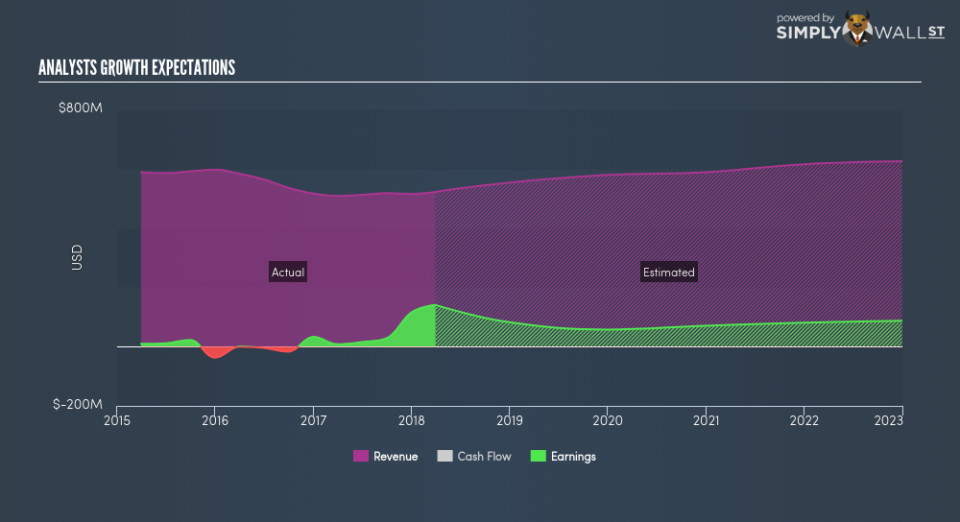What Is Brandywine Realty Trust’s (NYSE:BDN) Share Price Doing?

Brandywine Realty Trust (NYSE:BDN), a reits company based in United States, saw its share price hover around a small range of $15.32 to $16.75 over the last few weeks. But is this actually reflective of the share value of the mid-cap? Or is it currently undervalued, providing us with the opportunity to buy? Let’s take a look at Brandywine Realty Trust’s outlook and value based on the most recent financial data to see if there are any catalysts for a price change. View out our latest analysis for Brandywine Realty Trust
What’s the opportunity in Brandywine Realty Trust?
According to my valuation model, Brandywine Realty Trust seems to be fairly priced at around 14.08% below my intrinsic value, which means if you buy Brandywine Realty Trust today, you’d be paying a reasonable price for it. And if you believe the company’s true value is $19.44, then there isn’t much room for the share price grow beyond what it’s currently trading. Furthermore, it seems like Brandywine Realty Trust’s share price is quite stable, which means there may be less chances to buy low in the future now that it’s fairly valued. This is because the stock is less volatile than the wider market given its low beta.
What kind of growth will Brandywine Realty Trust generate?
Investors looking for growth in their portfolio may want to consider the prospects of a company before buying its shares. Although value investors would argue that it’s the intrinsic value relative to the price that matter the most, a more compelling investment thesis would be high growth potential at a cheap price. However, with an extremely negative double-digit change in profit expected over the next couple of years, near-term growth is certainly not a driver of a buy decision. It seems like high uncertainty is on the cards for Brandywine Realty Trust, at least in the near future.
What this means for you:
Are you a shareholder? BDN seems fairly priced right now, but given the uncertainty from negative returns in the future, this could be the right time to reduce the risk in your portfolio. Is your current exposure to the stock beneficial for your total portfolio? And is the opportunity cost of holding a negative-outlook stock too high? Before you make a decision on the stock, take a look at whether its fundamentals have changed.
Are you a potential investor? If you’ve been keeping tabs on BDN for a while, now may not be the most advantageous time to buy, given it is trading around its fair value. The price seems to be trading at fair value, which means there’s less benefit from mispricing. In addition to this, the negative growth outlook increases the risk of holding the stock. However, there are also other important factors we haven’t considered today, which can help crystalize your views on BDN should the price fluctuate below its true value.
Price is just the tip of the iceberg. Dig deeper into what truly matters – the fundamentals – before you make a decision on Brandywine Realty Trust. You can find everything you need to know about Brandywine Realty Trust in the latest infographic research report. If you are no longer interested in Brandywine Realty Trust, you can use our free platform to see my list of over 50 other stocks with a high growth potential.
To help readers see pass the short term volatility of the financial market, we aim to bring you a long-term focused research analysis purely driven by fundamental data. Note that our analysis does not factor in the latest price sensitive company announcements.
The author is an independent contributor and at the time of publication had no position in the stocks mentioned.

 Yahoo Finance
Yahoo Finance 
